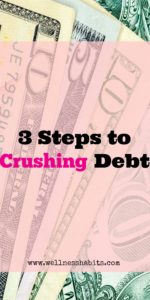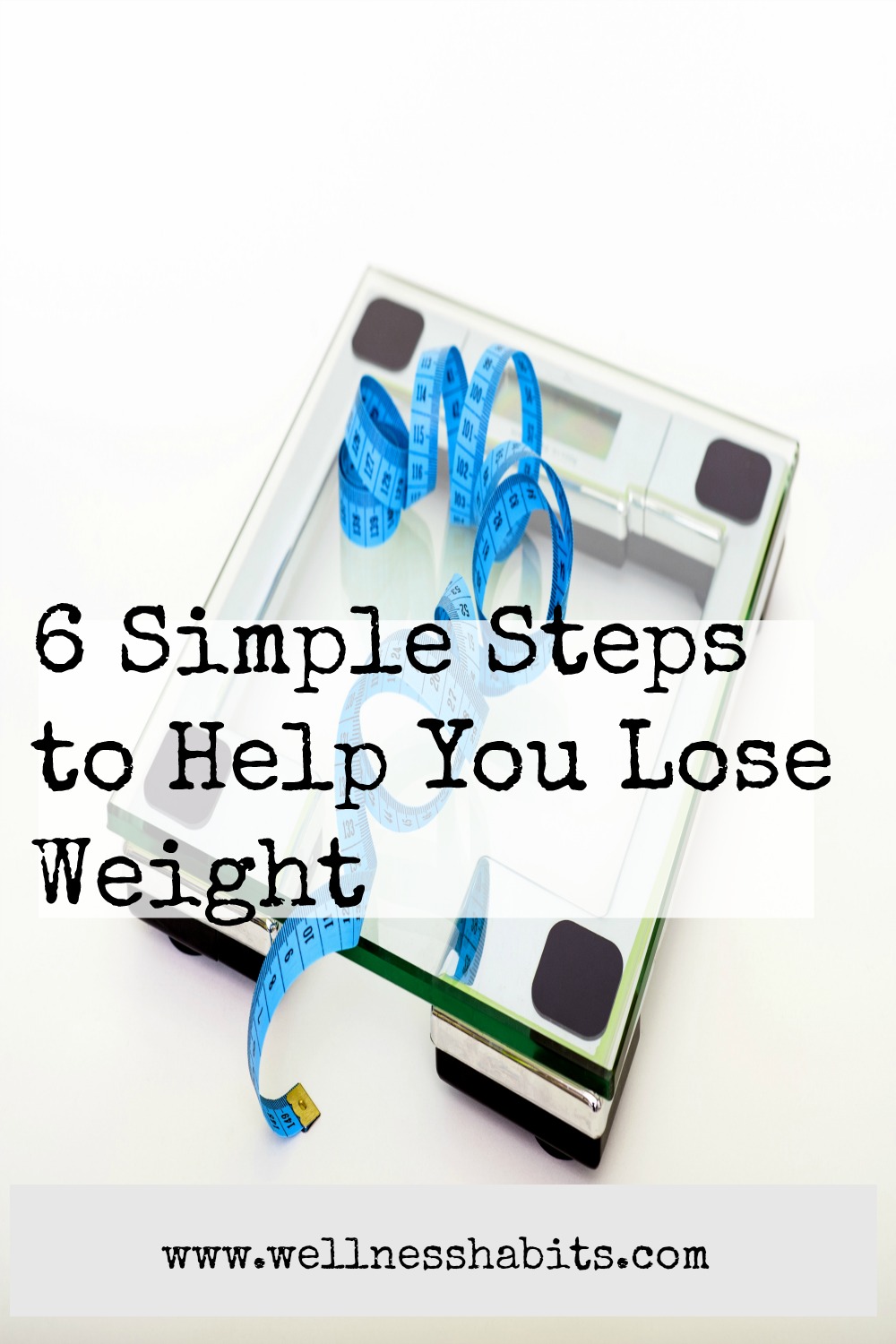 (This post may contain affiliate links where get a small % of a commission. I only promote products I love, if you want to see a full list, go to: https://www.wellnesshabits.com/products-i-love/)
(This post may contain affiliate links where get a small % of a commission. I only promote products I love, if you want to see a full list, go to: https://www.wellnesshabits.com/products-i-love/)
Here at Wellness Habits we write about things that impact our well being, mind-body-spirit. Topics of Finances I file under things that impact our mind. When your finances are not in order, these things tend to be things that weigh us down and hold us back in different ways. At Wellness Habits, I talk about habits that help all three areas of our wellness, today’s focus is on financial habits that will help garner peace of mind.
The average american has 16K of revolving credit card debt and that doesn’t even include student loans or car loans! Maybe you are in this category. Maybe you have more credit card/car/student loan debt and you feel like you are drowning in debt. If you are drowning, keep paddling. Hang on.
The sneaky thing about our mindset with debt is once you have it, it is easy to rationalize more debt. Meh…I already owe X amount, what’s a little more? I should be getting a bonus this year. I don’t have to pay it off NOW. What’s it matter anyway?
So month after month goes by and the debt either gets bigger or just sits there with you barely making the minimum payments. Weighing on you. In situations like these it is easy to just wish it away or hope that the minimum payments will get you to the end..somehow.
Unfortunately the minimum payments on a credit card will never get you to the end if you keep putting more money on them. You will eventually get to the end of your car payments and student loans, but it might take a very long time. This reality might make you feel trapped or uncertain what to do next.
Steps to get out of Debt
If you are really desiring to get out of debt and get out of debt as soon as possible start with taking inventory.
-
Take inventory
How much savings do you have? Do you have at least 1000? 3 months of salary if you lose your job? 6 months? Jot down that number now.
A. Calculate Expenses
Calculate your expenses for the last 3 months. None of your savings, just your expenses. As you do this: no judgement. No negative self talk about what you should have done. Don’t tell yourself that you are stupid or anything else that is mentally demeaning. Right now the focus is on gathering your numbers. It’s just data. Get the data. Work the numbers.
Write down that number
B) Calculate income
What was the last three months income ignoring any dividends from investments if you have any.
Write that number down.
C) Calculate Overspending or Underspending
Subtract your income from the last 3 months minus the expenses from the last 3 months.
Write that number down. Should look a bit like this:
_______________Income
(minus)
_______________ Expenses
=
_______________Over spending or under spending
Is it positive or negative? If it is a negative number, then for the last 3 months you have been spending more than you made.
Again…the number is just a number. Not a judgment. Stop and take a breath and notice if you are telling yourself any negative stories. If you are, notice them. Then realize that the more negative self talk you have the harder this will be. If you are having negative self talk challenge the thoughts. If the thought is: I will never get out of this mess. Challenge it with the thought: hmmm…well I know there are other people who have conquered their debt. I bet they have a road map.
One of my favorite sayings from the Book “Success Principles” is Success leaves clues. Have faith that you will be able to figure out how to conquer this debt. The first step is to figure out if you are continuing to build debt and to first figure out how put a plug in the leak. A great book that is a good How-To on how to get out of debt: Dave Ramsey’s “Total Money Makeover”
2) Prioritize your spending
Place your spending into these categories and start tracking in application like mint.com or even an old excel spreadsheet will do.
-
Need: Food (from the grocery store), housing. This category meets the needs of food/water/shelter and minimum debt payments
-
Wants: car payments, gas, phone, internet
-
Like: Cable, shopping, eating out, recurring entertainment (netflix, hulu), misc
3) Get Creative
I put car payments and gas into the ‘wants’ category because this might be a want to have rather than a need to have. If you have a car that has an expensive car payment, it would be worthwhile to investigate getting rid of your car and buying an older car out right so that you have no car payment. Think creatively on how to get rid of this expense. Maybe you can get rid of your car all together and take public transit or get down to one car in your house. But that car payment is most likely killing your budget. Get rid of it.
Your smart phone and it’s expensive plan that goes with it. There are many pay as you go options out there that can save you lots of $$. Republic cellular, AT&T has Go Phones, etc.
How much is the internet per month? Sounds a bit bananas in today’s day to go without it, but for a short time it could get you to where you want to go faster? Or are there other plans out there?
Take a long deep look into the ‘like’ category. What can you eliminate and get rid of and what can you reduce.
Now take a look at #1 your needs. Depending on your level of debt and situation, downsizing your living situation might be the simplest solution (not necessarily easy) but if your housing is digging into much of your take home pay, more than 30% of pre-tax pay, it might be good to take a look at other living arrangements if possible. This might not be possible depending on if you own your house or if you are in a housing market that you can’t sell or rent out your house at a price that would cover the mortgage. Take a deep look at your grocery store spending. There are creative ways to tackle this as well.
Categorize these first three goals:
1) Create a budget that does not exceed your current income and focus on only funding things on the need list, and maybe one or two things on the want list. Allocate every dollar in the budget but make sure that it includes the the following two things:
- Savings. Pay yourself immediately after you get paid, ESPECIALLY if you do not have an emergency fund.
- Pay down debt. Once you have a 1000 in emergency savings. Start paying down debt.
How to deal with your debt:
First, rank your debt from highest interest rate to lowest. Also rank it from smallest to largest. And pick one to start focusing on.
For paying down debt there are two schools of thought, after you have paid the minimum on all debts, 1) tackle the highest interest rate first because that is the one that you will end up paying the most in the long run. OR 2) do what is called a debt snowball starting with the smallest and working your way up to the largest as the momentum will help you as you pay it off. It doesn’t really matter what you chose to do, just start.
Now for the moment of truth. Look at how much you are putting towards those debts, let’s say $500/month and take your total debt and divide it by that number. If you have 50K in debt and pay it off at $500/month it will take 8 years to pay down all this debt. Ugh…I can hear your stomach sink. That can feel like forever. So look at another way. You can reduce your spending or you can increase your income or you can look to do both. Reducing your spending can only go so far. But there are an infinite number of ways to make more money each month. Lots of side jobs that can help you get there. If you can figure out how to make an additional 2K/month, this 50K in debt would go away in just over 2 years.
Once you have figured out the first three goals, write down 10 side hustle jobs you think you could do right now. Everything from be an uber driver to delivering pizza, walking dogs, house sitting, etc. Not sure where to start? Check out Side Hustle Nation or Smart Passive Income. Download a bunch of podcasts and the ideas will be flowing quick!
Hopefully this has given you an outline to a plan.
What to do today:
Start with these three goals:
1) Create a budget that does not exceed your current income based on funding each of the categories in order of need/want/like list.
2) Start saving. Pay yourself immediately after you get paid in order to have at least 1000 in an emergency fund.
3) Rank your debt from highest interest rate to lowest. Also rank it from smallest to largest. And pick one to start focusing on.
My recommendation is to find some other people to help you through this process or even start a group that goes through Financial Peace University by Dave Ramsey or take it online at anytime. It’s a 9 week course that totally changed my perspective on finances and spending.
His book “Total Money Makeover” is also great. He really helps with the nuts and bolts of how to think about how to put together a budget and then how to pay down your debt.
Let me know if you would like to be on the waiting list for an upcoming course: Wellness Habits: Creating Wealth Habits
[contact_bank form_id=1 show_title=true show_desc=false]


